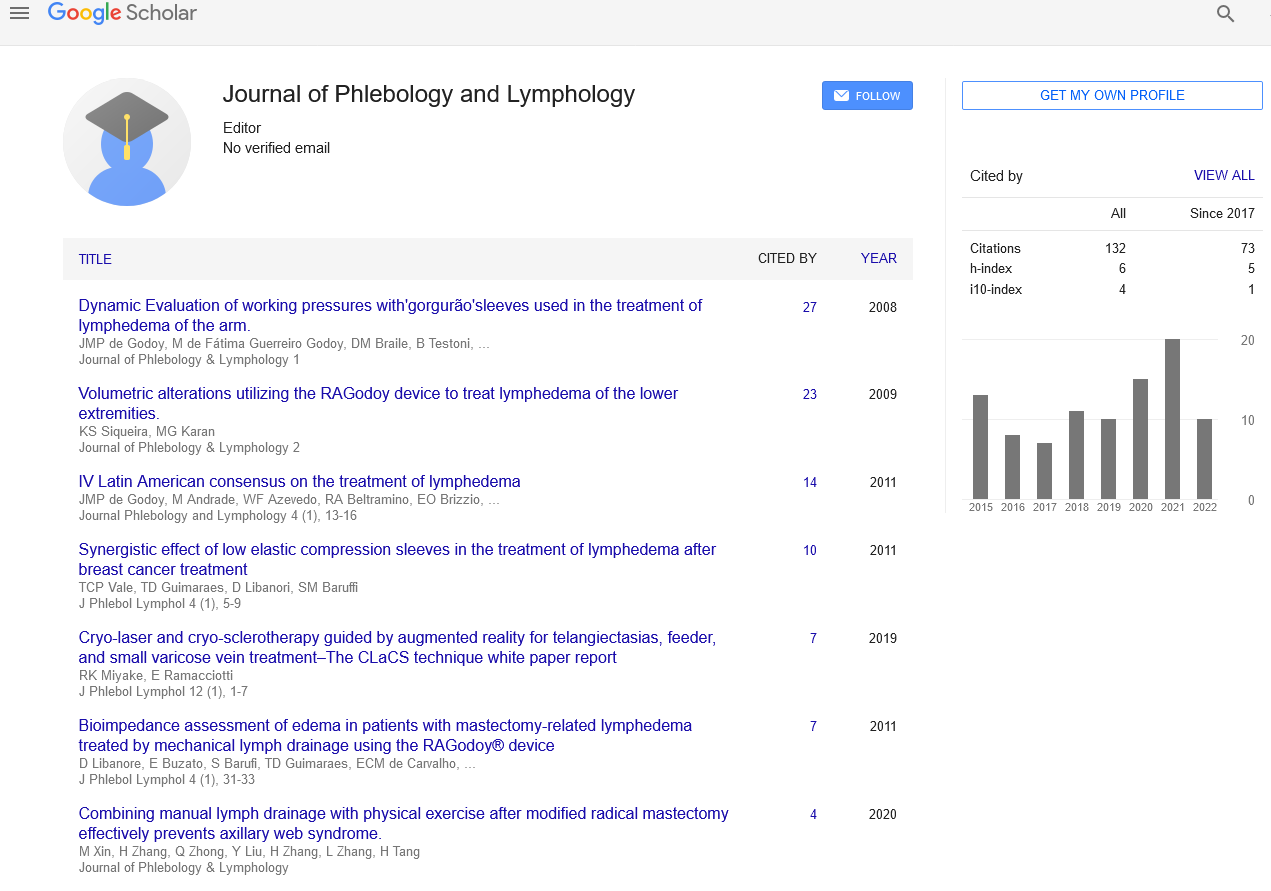A brief note on Hodgkin lymphoma
Received: 20-Nov-2023 Accepted Date: Nov 30, 2023; Published: 10-Dec-2023
This open-access article is distributed under the terms of the Creative Commons Attribution Non-Commercial License (CC BY-NC) (http://creativecommons.org/licenses/by-nc/4.0/), which permits reuse, distribution and reproduction of the article, provided that the original work is properly cited and the reuse is restricted to noncommercial purposes. For commercial reuse, contact reprints@pulsus.com
Introduction
Hodgkin lymphoma (HL) is a sort of lymphoma, wherein dangerous development starts from a specific kind of white platelets called lymphocytes, where multinucleated Reed–Sternberg cells (RS cells) are accessible in the patient's lymph center points. Signs may fuse fever, night sweats, and weight decrease. Routinely there will be non-anguishing created lymph centers in the neck, under the arm, or in the groin. Those affected may feel tired or be aggravated [1].
There are two basic kinds of Hodgkin lymphoma: excellent Hodgkin lymphoma and nodular lymphocyte-prevalent Hodgkin lymphoma. About piece of occasions of Hodgkin lymphoma are a result of Epstein–Barr contamination (EBV) and these are overall the excellent construction. Other peril factors fuse a family foundation of the condition and having HIV/ AIDS. End is coordinated by attesting the presence of illness and perceiving RS cells in lymph center point biopsies. The disease positive cases are named a kind of the Epstein-Barr contamination related lymphoproliferative sicknesses [2].
Individuals with Hodgkin lymphoma might give the accompanying manifestations:
• Lymphadenopathy: the most widely recognized side effect of Hodgkin is the easy extension of at least one lymph hubs. The hubs may likewise feel rubbery and enlarged when analyzed. (By and large). The lymph hubs of the chest are frequently influenced, and these might be seen on a chest radiograph [1,3].
• Systemic side effects: around 33% of individuals with Hodgkin infection may likewise give foundational indications, including: [2].
o Itchy skin
o Night sweats
o Unexplained weight reduction of essentially 10% of the individual's complete weight in a half year or less.
o Low-grade fever
o Fatigue (weariness)
o Systemic manifestations like fever, night sweats, and weight reduction are known as B side effects; in this manner, presence of these demonstrate that the individual's stage is, for instance, 2B rather than 2A
• Splenomegaly: amplification of the spleen is frequently present in individuals with Hodgkin lymphoma. The growth, notwithstanding, is only sometimes monstrous, and the size of the spleen might vary throughout treatment [1,4].
• Hepatomegaly: expansion of the liver, because of liver contribution, is rare in individuals with Hodgkin Lymphoma [3].
• Hepatosplenomegaly: the development of both the liver and spleen brought about by a similar sickness [4].
• Pain following liquor utilization: traditionally, included hubs are difficult get-togethers utilization, however this wonder is exceptionally remarkable, happening in simply a few percent of individuals with Hodgkin lymphoma, subsequently having a low affectability. On the other hand, its positive judicious worth is adequately high for it to be seen as a pathognomonic sign of Hodgkin lymphoma. The aggravation commonly has a beginning inside the space of minutes subsequent to ingesting liquor, and is generally felt as coming from the area where there is an elaborate lymph hub. The aggravation has been depicted as one or the other sharp and cutting or dull and throbbing [1].
Hodgkin lymphoma should be recognized from non-destructive reasons for lymph hub enlarging (like different contaminations) and from different kinds of malignant growth. Conclusive finding is by lymph hub biopsy (generally excisional biopsy with minute assessment). Blood tests are additionally performed to survey capacity of significant organs and to evaluate security for chemotherapy. Positron emanation tomography (PET) is utilized to identify little stores that don't show on CT filtering. PET outputs are additionally helpful in practical imaging (by utilizing a radiolabeled glucose to picture tissues of elevated ability to burn calories). Sometimes, a Gallium output might be utilized rather than a PET sweep. The current methodology for treatment means to diminish the intense and long haul poison levels related with Hodgkin lymphoma (for example cardiovascular harm and auxiliary malignant growths) and increment in general endurance [3,4].
Conclusion
Individuals with beginning phase illness (IA or IIA) are successfully treated with radiation treatment or chemotherapy. The decision of treatment relies upon the age, sex, mass and the histological subtype of the illness. Adding limited radiation treatment after the chemotherapy routine might give a more extended movement free endurance contrasted and chemotherapy therapy alone. Individuals with later illness (III, IVA, or IVB) are treated with blend chemotherapy alone. Individuals of any stage with an enormous mass in the chest are generally treated with joined chemotherapy and radiation treatment.
REFERENCES
- Jeltsch M, Tammela T, Alitalo K, et al. Genesis and pathogenesis of lymphatic vessels. Cell Tissue Res. 2003;14(1):69–84.
- Grewal R, Irimie A, Naidoo N, et al. Hodgkin's lymphoma and its association with EBV and HIV infection. Crit Rev Clin Lab Sci. 2018;55(2):102–114.
- Armitage JO. Early-stage Hodgkin's lymphoma. New Eng J Med. 2010;363(7):653–62.
- McKay P, Fielding P, Evans EG, et al. Guidelines for the investigation and management of nodular lymphocyte predominant Hodgkin lymphoma. Br J Haematol. 2016;172(1):32–43.





